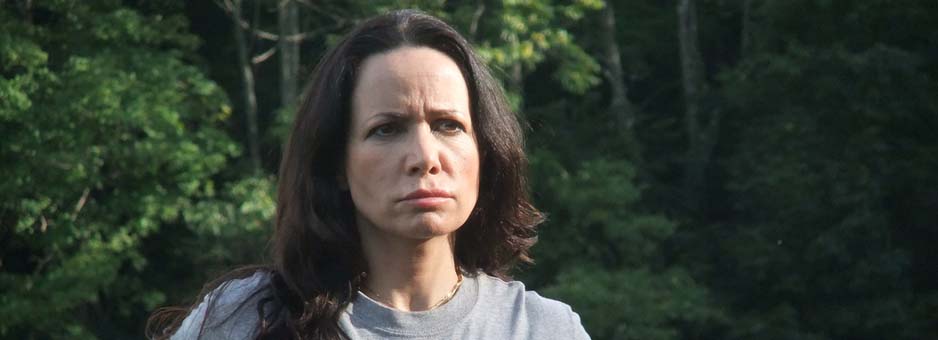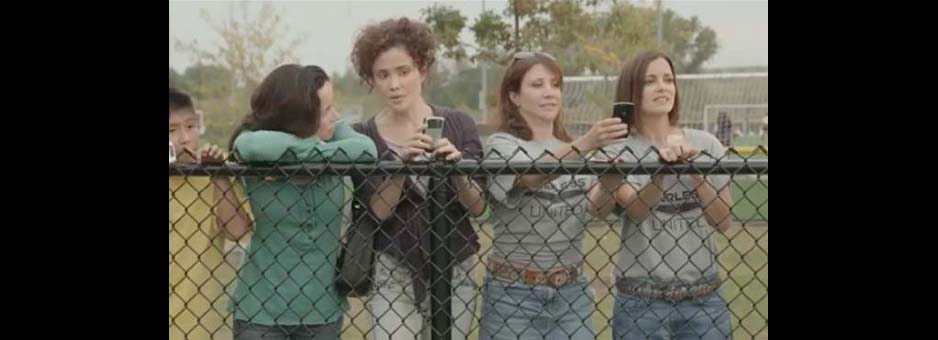- Panzehir
- Double Xposure
- Ram-Leela
- Ilo Ilo
- Elysium
- Welcome to the Punch
- Pacific Rim
- Bad Parents
- Archive


"Bad Parents": Baselight for Avid Helps Filmmakers Achieve a Studio Look on an Independent Budget
Like many independent films, Bad Parents, writer/director Caytha Jentis' new black comedy, faced budget constraints as it made its way from script to screen. In the past, that might have meant that compromises needed to be made, especially during post production as studio-calibre finishing services can be costly. But Bad Parents avoided such tough choices as it became one of the first films to take advantage of Baselight for Avid, a new plug-in from FilmLight, which makes the world's most powerful colour grading toolset available within the industry's most popular editing platform.
Bad Parents, which debuted recently at the Austin Film Festival, is the story of a group of suburban parents who become obsessed with their children's youth soccer league. The film, which stars Janeane Garofalo and Christopher Titus, was shot last fall in New Jersey and lensed by cinematographer Anthony Savini who primarily used a pair of Sony PMW-F3 cameras. Due to the newness of the camera only one was then equipped with Sony's S-log module. That would have important implications for post production.
Verne Mattson, who edited and graded Jentis' earlier feature The One, reprised those roles for Bad Parents. Mattson planned again to cut the film on Avid Symphony but needed a compatible grading solution. "I needed a refined grading toolset which only Baselight for Avid could offer," he explains. "Independent films often need a lot of colour love because of the quick set-ups, limited lighting and other factors."
Grading the film in a conventional DI suite was out of the question due to budgetary considerations, but Baselight for Avid offered an intriguing alternative. Part of FilmLight's Editions product line (which also includes Baselight for Final Cut Pro and Baselight for Nuke), Baselight for Avid is a software solution that makes the principal elements of Baselight's award-winning grading toolset available within the Avid platform. An editor can carry out grading functions, including many sophisticated operations such as tracking and film-grading, without needing to export the project to a dedicated grading platform. For Bad Parents that raised the possibility of achieving a studio-quality grade at a fraction of the usual cost.
Mattson obtained a license for Baselight for Avid and installed it on his editing system. He also acquired Avid's Artist Colour Panel, which replicates some of the functions of a Blackboard control surface and allowed Mattson to work in manner similar to a traditional colourist. The software enabled Mattson to carry out many sophisticated grading functions not possible with the system he had used for The One. In particular, he was able to use Baselight's Film Grade tools to work with S-log media in a manner similar to film to produce a deep, rich, cinematic look. "The Film Grade tools worked beautifully; we were really pleased with the results," he recalls. "The software also allowed me to apply keys and mattes, something I wasn't able to do previously. We did that a lot to highlight particular aspects of the frame."
Savini, who attended many of the grading sessions, was impressed by the system's power and speed. "Verne was a maestro," he says. "If we wanted to dial in a little more green or a little less blue, he was able to do so with just a few clicks. It was amazing."
Baselight for Avid allowed Mattson to address a number of specific colour issues. Notably, it allowed him to compensate for differences in images produced by the two Sony cameras. "On the set, they did what they could to get the camera that lacked the S-log module to match the other," Mattson says, "but the difference was still very apparent."
In Baselight, that difference virtually disappeared. Savini notes that he was particularly concerned with the final ten minutes of the film which was shot as an exterior on a soccer field and where the two cameras were used interchangeably. "It took a lot of work, but Verne was able to get them to match," he says. "The difference is virtually indistinguishable."
Savini adds that they had a similar issue with a montage sequence, composed of a series of short dialogue clips. "Each shot involved a different character at a different location and a different time of day," he says, "and they all had to match. One shot was a little magenta and the next was a little green. Even if people don't see the difference, they might feel it, which could be jarring and keep them from connecting as much to what is happening on the screen. Verne was able to make them match, while still feeling true to themselves. That was not easy to do."
Baselight for Avid also allowed Mattson to work in a manner he found very appealing, shifting back and forth between editorial and grading functions virtually at the flip of a switch. "As someone who likes to grade and edit, I like that flexibility," he says. "You don't have to send it out to another program and make a round trip."
According to Mattson, Baselight for Avid allowed him to give Bad Parents a look that compares favourably to studio-produced comedies. As a result, he believes that the benefits of the system will appeal to a lot of independent filmmakers and looks forward to using it on his next project. "For people who want to edit and colour," he says, "it's pretty cool."



